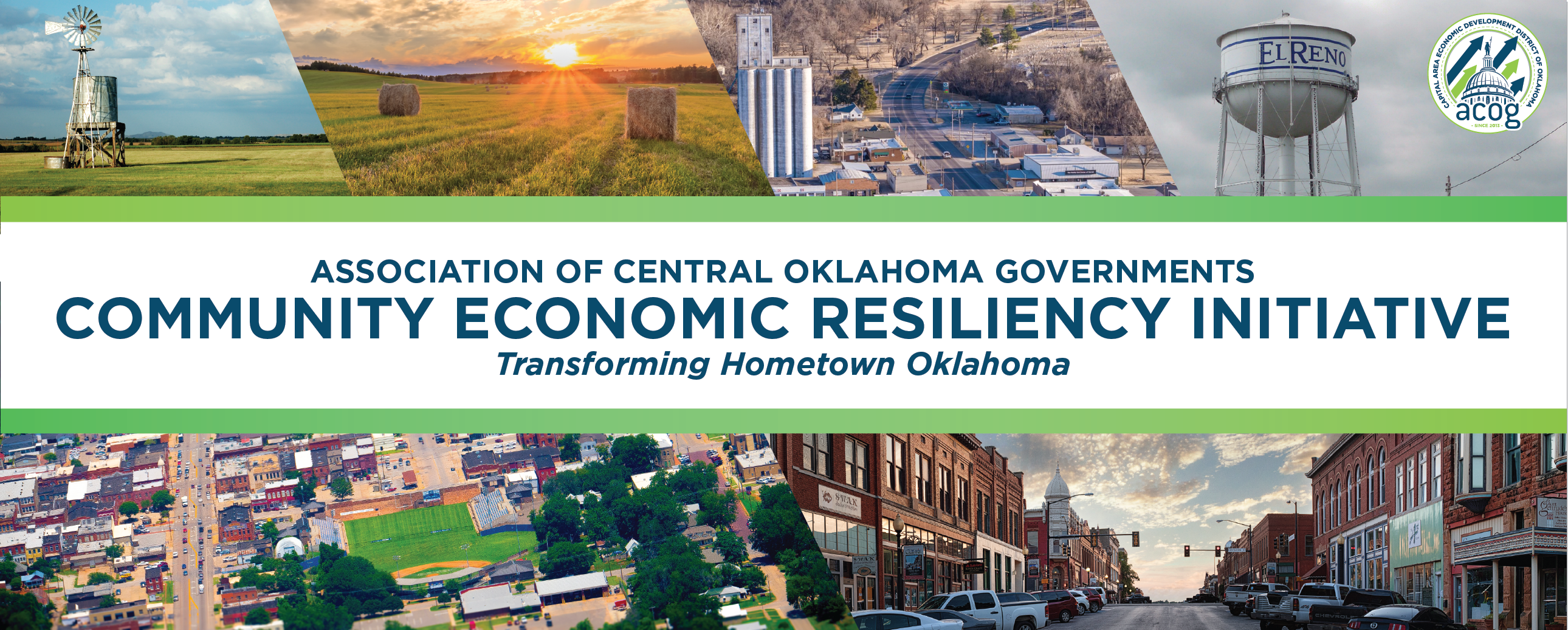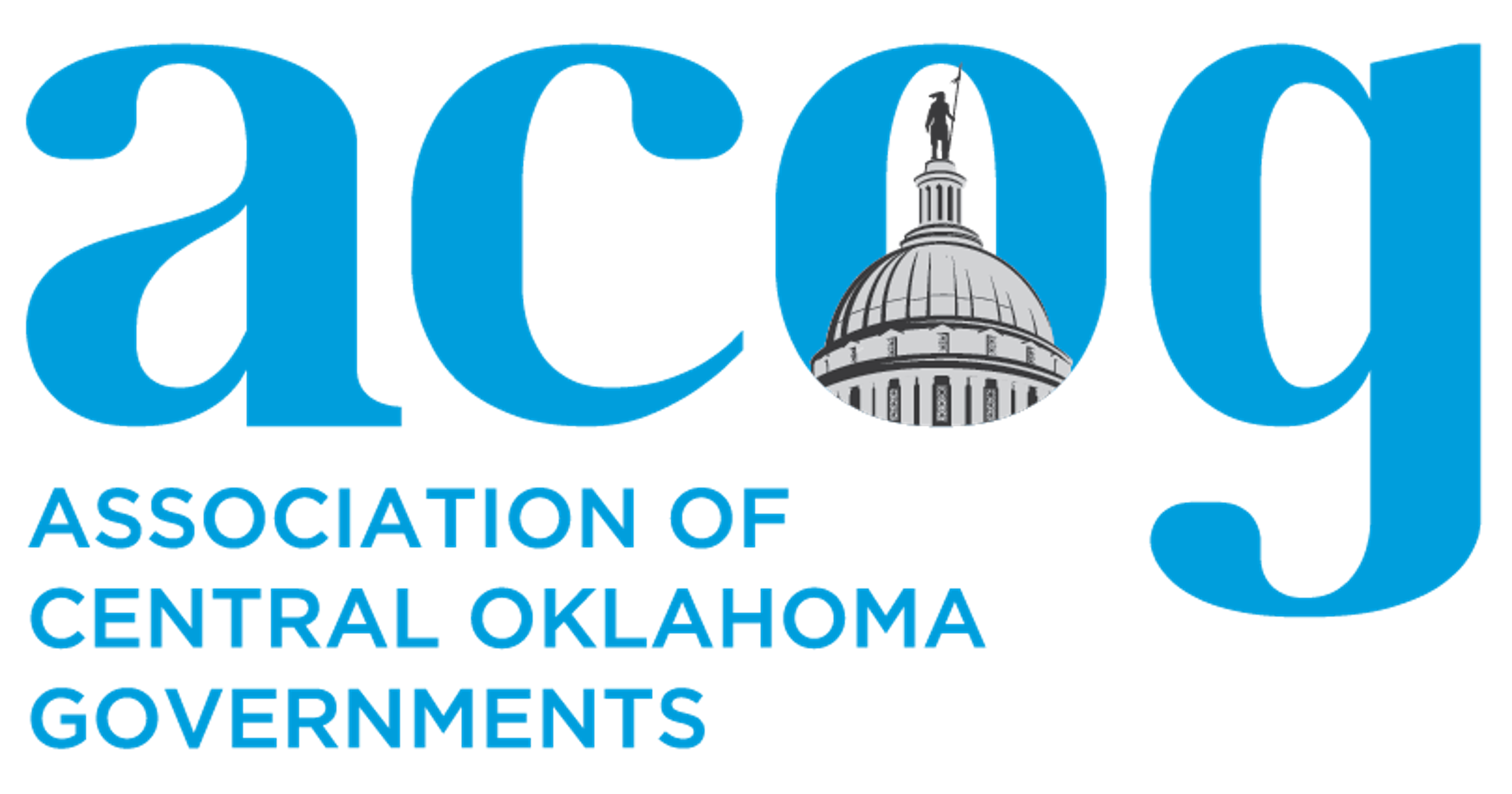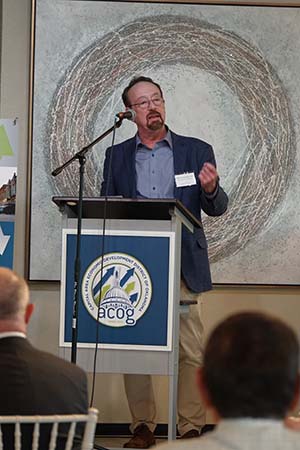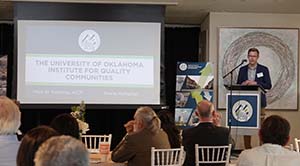
ASSOCIATION OF CENTRAL OKLAHOMA GOVERNMENTS (ACOG) TRANSFORMS HOMETOWN OKLAHOMA WITH THE COMMUNITY ECONOMIC RESILIENCY INITIATIVE (CERI) PROGRAM
OKLAHOMA CITY — In 2020, the Association of Central Oklahoma Governments (ACOG) received a $400,000 supplemental CARES Act Recovery Assistance grant from the Economic Development Administration (EDA) – Austin Regional Office to respond to, and recover from, the impacts of the coronavirus (COVID-19) pandemic. A portion of this grant was used by ACOG to fund the Community Economic Resiliency Initiative (CERI), a new program that offered municipal governments the opportunity to develop planning demonstration (demo) projects that would model strategic community and economic investment with a focus on Placemaking and Cultural Heritage Tourism.
The Program created the opportunity for a city to envision greater economic potential through a process of community research and engagement, garnering citizen recommendations, best practices training, and proposed project implementation strategies.
In developing the CERI Program, ACOG partnered with the Oklahoma Main Street Center and the University of Oklahoma Institute for Quality Communities (IQC) to provide a toolkit of services to the selected municipalities that served as the foundation for effective economic revitalization and resiliency. With authorization from the ACOG Board, IQC was procured through an inter-local government agreement with ACOG to provide planning consultant services to each of the selected applicant cities for the demo sites. Planning consultant services were provided by the University of Oklahoma IQC at a funding level of approximately $26,700 per planning demonstration site. Assistance and support services from the Oklahoma Main Street Center, where applicable, was made available to the selected municipalities.
After a competitive RFP process, in March 2021 the ACOG Board approved three (3) planning demonstration site projects in the following communities as recommended by the CERI Review Committee:
- The City of El Reno – Route 66/Sunset Drive Corridor Study
- The City of Guthrie – The Elbow Cultural and Recreational Area Plan
- The City of Harrah – Downtown Sweeney Switch Plan
A year later, on May 10, 2022, the graduate students from OU IQC presented their plans for each CERI city and are as follows:
City of El Reno: Route 66/Sunset Drive Corridor Study
Project Information: The Corridor Study area consists of Sunset Drive in El Reno, between Petree Plaza and Adams Park. Between both landmarks is one mile of Route 66, named Sunset Drive. Through community engagement and interviews with stakeholder groups, three major themes arose which became the three pillars of the Sunset Drive project:
- A Safe Place for All
- Community & Economic Development
- Public Image
Project Recommendations:
- A SAFE PLACE FOR ALL
– Pedestrians feel safe crossing the street
– Pedestrians feel safe walking on the sidewalks - COMMUNITY & ECONOMIC DEVELOPMENT
– Public commitment to creating a district that attracts entrepreneurs to Sunset Drive
– Businesses and services on Sunset Drive that serve tourists and locals alike - PUBLIC IMAGE
– There is civic pride for Sunset Drive
– Properties are well-maintained & attractive - TOURISM
– Tourists respond to cues inviting them to stop & get out of their cars
– Tourists easily navigate Route 66 in El Reno
CITY OF GUTHRIE: THE ELBOW CULTURAL & RECREATIONAL AREA PLAN
Project Information: The area known as The Elbow in Guthrie, was an African American community founded in 1903. After over a century of flooding, the neighborhood was condemned. Some residents relocated, while others decided to stay.
Traditionally, society builds museums and erects monuments to honor history and culture. For the Guthrie CERI Project, these methods are not available, due to no structure being built within a floodway; therefore, the Elbow community will be recreated virtually.
Visitors to the site will walk the former streets which have been reimagined as greenway trails, gaze upon virtual recreations of the buildings while viewing historic photos and listening to interviews of former residents and their descendants.
Project Recommendations:
- Allow the former residents and their descendants to name the recreational and cultural area
- Continue to build the augmented reality model by gathering interviews and family memorabilia.
- Restore S. 5th St. to connect the Recreational and Cultural area to Downtown and install on-street parking and pedestrian pathways
- Develop city-owned land along S.5th Street into socializing spaces to attract people to the Recreational and Cultural Area
- Build a pedestrian/service vehicle bridge over Cottonwood Creek at W. Perkins Ave. to connect to the Recreational and Cultural Area
CITY OF HARRAH: DOWNTOWN SWEENEY SWITCH PLAN
Project Information: The goal of the Harrah CERI project is to provide a framework to transform downtown Harrah into a walkable destination branded as Sweeney Switch.
Harrah may seem like a typical rural Oklahoma town, but its circumstances are changing rapidly. The new Kickapoo Turnpike is inducing rapid growth of exurban development in large-lot residential subdivisions. Commercial development is sure to follow. The challenge is to avoid car dependent sprawl and funnel shops and businesses into a revitalized town center.
Project Recommendations:
- The Sweeney Switch plan is organized into five big moves:
- Remove downtown Harrah from the regulatory floodplain using natural barriers and compensatory storage
- Calm traffic and improve the streetscapes of Church Avenue, Main Street, and Tim Holt Drive
- Devise a parking strategy primarily using on-street angled parking
- Connect downtown with the parks, schools, and neighborhoods by expanding trails
- Encourage mixed-use downtown development of vacant lots and rehabilitation of older buildings
Staff Contact
Rachel Meinke
Public Information Director
OU IQC Introduction
Shane Hampton, Director, University of Oklahoma Institute of Quality Communities (OU IQC)
Guthrie
Top photo: Virtual Reality rendering of Mt. Zion Baptist Church. Bottom photo: Drexel Street rendering recommendation
Harrah
Top Photo: Main Street in Harrah Bottom Photo: Main Street in Harrah with recommendations implemented
El Reno CERI Plaque Presentation
Dustin Downey, City of El Reno Planner and Mark W. Sweeney, AICP, ACOG Executive Director
Guthrie CERI Plaque Presentation
Justin Fortney, City of Guthrie, Director of Tourism and Mark W. Sweeney, AICP, ACOG Executive Director












